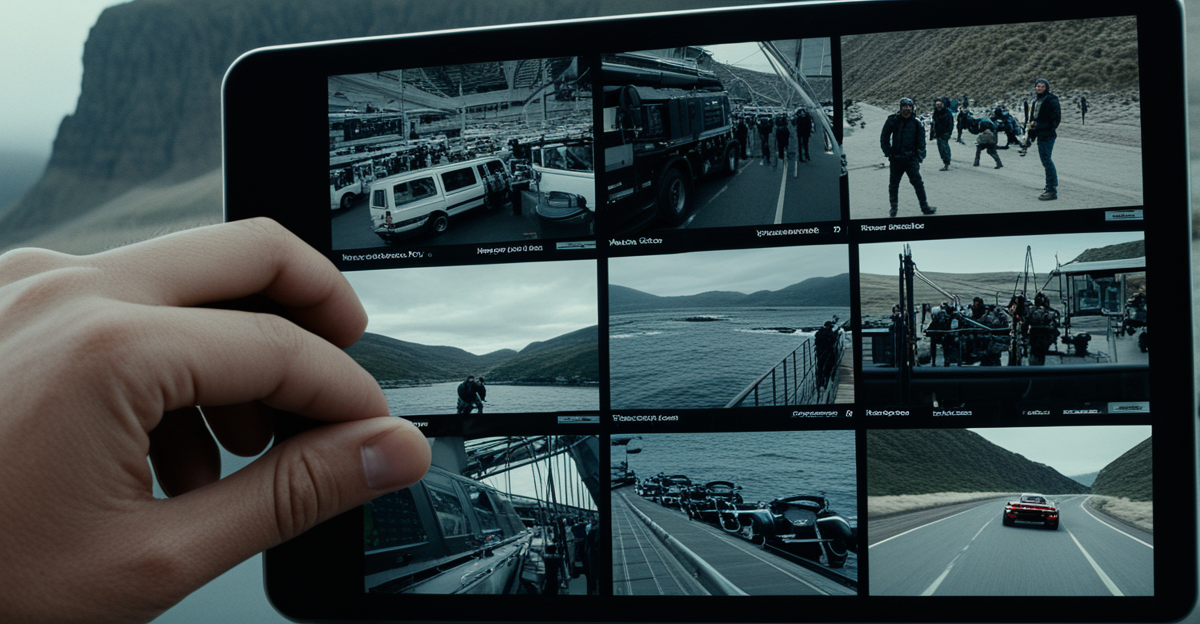Creating a video storyboard no longer requires hours of tedious work. Powerful tools like Boords simplify and speed up the process with intuitive drag-and-drop interfaces and real-time collaboration. These solutions help teams visualize ideas clearly, manage feedback efficiently, and deliver polished storyboards in minutes—allowing more time to focus on creativity and less on formatting or endless revisions.
Essentials of Video Storyboarding: Step-by-Step Guide for Effective Visual Planning
An effective video storyboard is the backbone of pre-production, translating concepts and scripts into a series of organized visual frames. As detailed on the page: online resource, this structure serves as a roadmap for your entire creative process, ensuring that every shot, scene, and dialogue is carefully planned before the cameras roll.
Also read : Design a killer video storyboard quickly using top tools
Understanding the storyboard’s role begins with visualization. Each panel sketches out a significant scene or camera angle. This method allows teams to draft a clear visual plan for videos, identify narrative pacing, and pre-emptively resolve potential bottlenecks. By breaking down a script into individual frames, you can easily map out transitions and emotional beats, keeping the project cohesive from start to finish.
When drafting your video storyboard, certain essential elements should always be present:
Have you seen this : What are the key factors to consider when developing a marketing plan for UK businesses?
- Panels for each key visual moment
- Scene descriptions to clarify location or atmosphere
- Dialogue or audio notes beneath frames, supporting the narrative flow
- Annotated directions for camera movement or transitions
Utilizing a straightforward structure, key visual notes, and explicitly marked dialogue will make your storyboard genuinely effective. This careful preparation creates alignment within teams and paves the way for engaging, productive shoots.
Tools, Templates, and Collaborative Features for Storyboarding Success
Overview and comparison of leading online storyboard tools
Boords, Storyboard That, Canva, and PlayPlay all stand out as online storyboard tools and software designed to accelerate the video storyboard creation process. Each provides features tailored to both solo creators and teams. Boords is praised for its unified workflow—combining drag-and-drop editing, custom storyboard export options and formats, and automated version management. Storyboard That is popular for educational and business settings, emphasizing privacy compliance and real-time team collaboration for storyboards. Canva excels in accessible, template-driven content creation, integrating millions of assets and making collaborative feedback seamless. PlayPlay focuses on quick structuring with customizable templates and automated motion design, simplifying the storyboard workflow for video editors.
Using storyboard templates and downloadable checklists
To speed up planning scenes for film and video projects, storyboard templates are essential. Tools like Canva and Boords supply adaptable storyboard templates for marketing videos, educational content, or animation. These templates reduce repetitive tasks in the video storyboard creation process, while exportable checklists ensure every necessary storyboard element is captured and organized.
Collaborative workflows: team editing, feedback, and version control
Real-time team collaboration for storyboards is now a hallmark of leading platforms. Features include multi-user editing, integrated comments, and feedback, alongside version history—streamlining every storyboard workflow for video editors and keeping teams aligned from draft to final approval.
Optimizing Storyboards for Video Production: Best Practices and Advanced Techniques
Revisions, annotations, and managing feedback within storyboards
Using best practices for video production storyboards, teams ensure clarity and prevent miscommunication. Integrating feedback through storyboard revisions and annotations accelerates alignment. Clear note-taking provides context and rationale for creative choices, helping teams refer back during discussions. Collaborative platforms allow real-time updates, where each change—be it to visuals or text—remains visible to all contributors, centralizing feedback. This keeps the storyboard as a communication tool in video production and minimizes project delays.
Enhancing storyboards with camera angles, shot lists, transitions, and effects
Storyboards function best when visuals and dialogue appear side by side. Incorporate shot numbers, camera angles, and descriptions to optimize communication with directors and editors. Integrate effects and transitions directly in-panel for each scene—this sets up the creating shot lists from storyboards stage. Mark camera movements and timings using standardized symbols or simple diagrams. These details clarify intent, making it easier for the crew to execute the plan on set.
Exporting and presenting storyboards: PDF, animatics, and handoff strategies for smooth production
Finalized storyboards should be exported in universally accessible formats, such as PDFs or animatic videos, for seamless handoffs. Clearly labeled files help stakeholders track storyboard revisions and annotations. Exported shot lists give production teams a reliable, structured guide. This supports efficient collaboration and ensures the storyboard as a communication tool in video production is maintained from concept to shoot.











